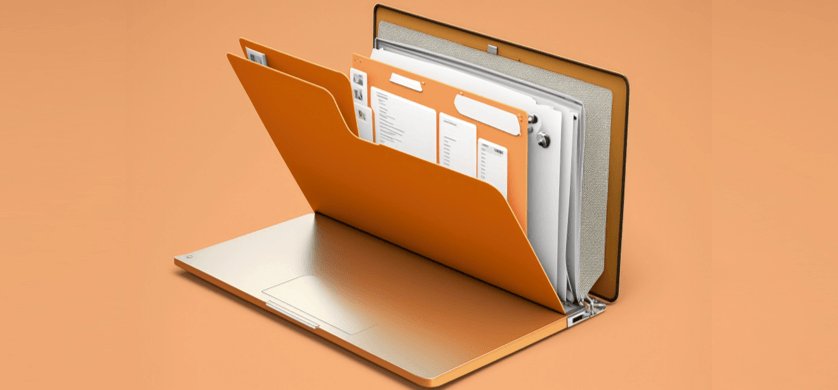Structure is all around us…
All around us are rules, structures, laws and processes that create order in public and economic spaces. But what if there is chaos in our heads?
Order is a big word that has so many meanings that there is actually no accurate definition of it. One thing is clear: It is individual. What one person calls chaotic, another finds well structured. This also means that each individual has to find their own organizational system to work with.
Stress arises, among other things, when we find ourselves in places that do not correspond to our own organizational system. When we don’t feel comfortable and don’t know where to find something. This phenomenon occurs everywhere, whether in a hotel, at a friend’s house, or in the office. There are different systems of order in each place, which are adapted to its processes.
Employees must therefore be and remain flexible, as things can constantly change. But that doesn’t mean that there aren’t ways for everyone to deal with the circumstances.
…and yet many people miss it
Within the framework of the given order, you can apply your own habits, sometimes modified, but most of the time it is possible without major detours. For example, various email programs have the ability to assign categories or labels, adjust the color of emails and folders, and set reminders. You can plan your everyday life by blocking your own calendar and share it with others if necessary.
As always in life, the topic of order is about goals and their prioritization.
Is a tidy desk, an empty inbox, or a folder structure your ultimate goal?
You probably say that your finalized project is the goal, everything else is secondary.
I have to disappoint you here. If you don’t have an organizational system, you won’t be able to complete your submission on time. You’re too distracted by searching for information, by incoming emails and the mail on your desk. This triggers stress in you. The consequence is: You have to create order.
Increased productivity
What is most important to you now? Desk, inbox or folder structure.
I guess the folder structure to find project information quickly and easily. How do you proceed? It’s not a closet that you can take everything out of and then clear out; most of the time there is already a folder structure that doesn’t work.
You won’t be able to avoid looking into every folder and rigorously deleting what is no longer needed. Once you have sifted through everything, you need to group the remaining information that belongs together into categories. At the end, check the folder names to make sure they make sense to you and that you know what they mean later as well.
It will take some time, and I’ll give you the tip to get things organized when it’s quieter and you don’t have to constantly work in the folders. It may take a day or two, but then you will have a complete overview and can carry out your work more productively. The fewer documents you have, the faster not only you work, but also your computer.
Would you have chosen “Inbox”? Then it is similar to the folder structure. First step here is to clear out. There is the “rule” function, which can relieve you of a lot of the work when it comes to deleting advertising emails.
In the best case scenario, you will only have the emails you need. Think about useful folders that match the incoming information and sort them. Possible options for parent folders are, for example, year, customer name, project name. Label the folders sensibly so that you can still know where everything is even after a vacation.
The same applies to both: if a new topic is added, a new folder should also be created. Don’t wait too long and work directly in a new folder so as not to mess up the existing structure.
A basic rule is to only keep what is important to you. You can dispose anything that is duplicate, broken (mistaken when opening) and out of date. If you are unsure, ask a supervisor to confirm.
Order in presentations
Nowadays you can no longer avoid presentations, whether in professional or private life. At first you think that order has nothing to do with it, but I can prove you wrong.
Even with a professional, meaningful presentation, “the less the better.” In order to make clear, concise statements, less is more. We only focus on the statements, graphics and information that are really relevant.
Similar themes get connected and creates “categories”, the chapters. With the help of graphic and linguistic means, you give the information a framework and differentiate it from the other topics.
The tactics are also used to create physical order and help you counteract chaos.
From these examples you can see that order is everywhere and, if you give it the chance, it makes your life easier.
Jessica Hassenzahl is an organization coach at Bergstrasse in Germany and founder of orga:jessica. In addition to lectures, her main focus is on private organizational coaching. She visits her customers and helps to implement individual organization systems on site.






 HiLo_Agency
HiLo_Agency HiLo_Agency
HiLo_Agency